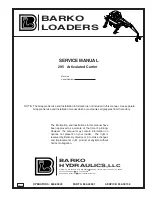
Operator's Manual
|
3-7
3.2.5.1 Parameter Adjustment
Use the
▲
Up/
▼
Down
buttons to adjust ventilation control parameter values
(including Pressure Control and Volume Control values), alarms, and
humidifier setting (if available). Select the desired parameter by pressing its
touch button once. The corresponding value (numerical display) will blink.
Press the
▲
Up
control to increase or the
▼
Down
to decrease the affected
parameter value. The value continuously changes when the
▲
Up/
▼
Down
controls are tapped and held. The value adjustment is accepted if:
The user presses the selected parameter button again.
The user selects a different parameter.
Five seconds elapse.
Pressing a parameter button without pressing either the
▲Up
or
▼Down
control button within 5 seconds causes the parameter to preserve its current
value.
If in the On condition and switching between Volume Control
and Pressure Control, the value adjustment for the new breath
type selected (Volume or Pressure) will be accepted as noted
above, but the breath type (VC or PC) will only change if the
user taps the new breath type control button again.
3.2.5.2
Monitored Information:
The
▲
Up/
▼
Down
controls are used to access and display monitoring
messages in the Message Display Window. Monitored information includes
volume, frequency, pressure values and operation information. See page 3-
37 for more information on the Front Panel Message Display Window.
When the FLIGHT 50 Ventilator is ventilating and there are no alarm
messages displayed on the Message Display Window, press the
▲
Up
control
to access the monitoring information. Press the
▲
Up
button again to scroll
through the messages.
3.2.5.3 Changing Default Settings
The
▲
Up/
▼
Down
controls are also used in User Set Up to change a set up
value. See User Set Up on page 3-32 for more details.
3.2.6 Frequency of Breaths
(
ƒ
)
Figure 7 – Frequency of Breaths Button
Range:
1 to 99 b/min
In the ACMV mode, the
f
(frequency) setting determines the minimum
number of time-triggered mandatory breaths; in the SIMV mode, it
















































